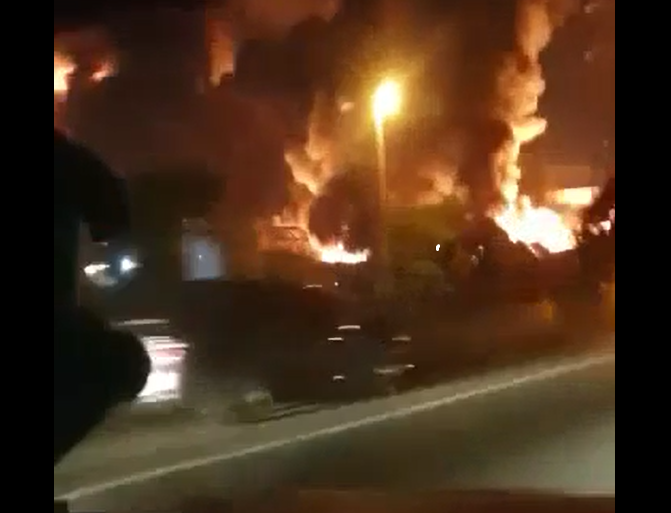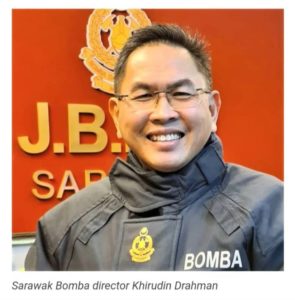
By Datu Khiruddin Drahman
Fire…everyone knows about its importance to mankind. It’s used for cooking, heating and other essentials in industrial applications. For fire to evolve, three important elements must be present – oxygen, heat and fuel. Removing one of them gradually will kill the fire.
We all know that when fire is small, it becomes our servant. But when it becomes big, it becomes our master.
When it grows, it will take everything in its way. It doesn’t select its victims. Any occurrence of fire can either be natural, accidental or intentional.
Any investigation into a fire or an explosion is a complex endeavour. This is because it involves added fire-fighting skills and knowledge in terms of science and technology.
Knowing the fire patterns and physical evidence are crucial to the response team, not only in controlling the spread of the fire but also in preserving the evidence!
All fire incidents must be investigated for record purposes. And lessons learnt from them. With technology and help from social media nowadays, our job in the fire brigade or BOMBA becomes much easier, especially in collecting physical evidence and employing theoretical approaches to determine the root cause of the fire.
One of most important observations that every fire-fighter and response commander must have when arriving at the scene of fire is to look at the smoke and flames as these things don’t lie.
Pictures or videos that go viral are critical source of information in our forensic investigations. By studying the photos or video clips, we can see the smoke formation and its characteristics such as the colour which helps in our analysis.
We can also zoom in or focus on the behaviours of the people taking them. Even background noises such as people mumbling, grumbling, talking or shouting, or other audible sounds are taken into consideration in our analysis.
In collecting data, we would check the whole area of the incident to determine whether it’s arson, accidental or natural. Any data or evidence collected will be investigated upon. As far as our investigation is concerned, all materials are deemed as forensic evidence.
Under Fire Services Act 1988 (amended 2021) Sections 45, 46 and 47, BOMBA is empowered to investigate all fire incidents in the country.
After a fire, all scene commanders and forensic investigators must know the basic methodology that stresses on the compilation of factual data and an analysis that must be accomplished objectively and truthfully. The basic methodology of a fire investigation must rely on the use of a systematic approach and attention to all relevant details.
Basic knowledge plus an understanding of ignition and combustion principles, and the ability to apply them when interpreting the evidence at the scene; and developing the conclusion regarding the origin and causes of the fire are all very crucial.
The core objective of any fire scene examination is to collect data as required by scientific methods. Another aspect is FBI or fire behaviour indicators. Reading the FBI is essential in assessing an ongoing dynamic risk and developing a strategic plan to douse the fire.
When tackling fires, all response teams must understand FBI and choose the best method of fighting fires. It also calls for the ability to size-up the extent of the fire. If the sizing-up is incomplete or inaccurate, then the safety of firefighters and building occupants may be compromised.
All data collected are known as empirical data and are arrived at based on observations or experiences that are capable of being verified. As such, FBI is very crucial in both fighting fires and in investigations later. And all data collected as well as materials and debris at the site must be packed properly and marked to ensure a proper chain of custody and are not tainted.
They must be sent immediately to Fire Forensic Lab (FIL) for the case to be handle by an authorised chemist. Other data will be handled by the FIO or fire investigation officer.
In the course of determining a suspected location for investigation, a K9 forensic dog may be used. The chemist’s report is the core component of the analysis and must be endorsed by the FIL, which is equipped with eight types of sophisticated analysis equipment meant to determine the cause of any fire.
All in all, the job of an authorised chemist is highly technical and quite complex. He or she is also the expert witness in court. All positive samples will be kept by BOMBA between six months and seven years.
The quality and standard of the FIOs, FILs and chemists usually lift the image of BOMBA.
Indirectly, they also send very clear messages to the community on their findings of any fire, be it have occurred naturally, accidentally or intentionally.
Firefighters still uphold old-school types of detective work when investigating fire cases. But latest technologies help to significantly complement all investigation processes.
Their work can determine who are the culprits to be brought to justice and sentenced For example, a potential arsonist may think twice before committing the act.
Gradually, the work of these BOMBA experts will educate communities to be more vigilant. Their investigation reports can also be used as benchmarks and reference to improve fire-fighting techniques and strategy.
They can also help to improve the construction industry in terms of what types of materials are more suitable as fire retardants. These feel good factors will make our daily lives more meaningful for all concerned.

Datu Khiruddin Drahman is the Director of Jabatan Bomba dan Penyelamat, Sarawak. Keeping people and buildings safe from fire is his business and keeping people informed of ways how to keep themselves safe is a full time vocation for him.